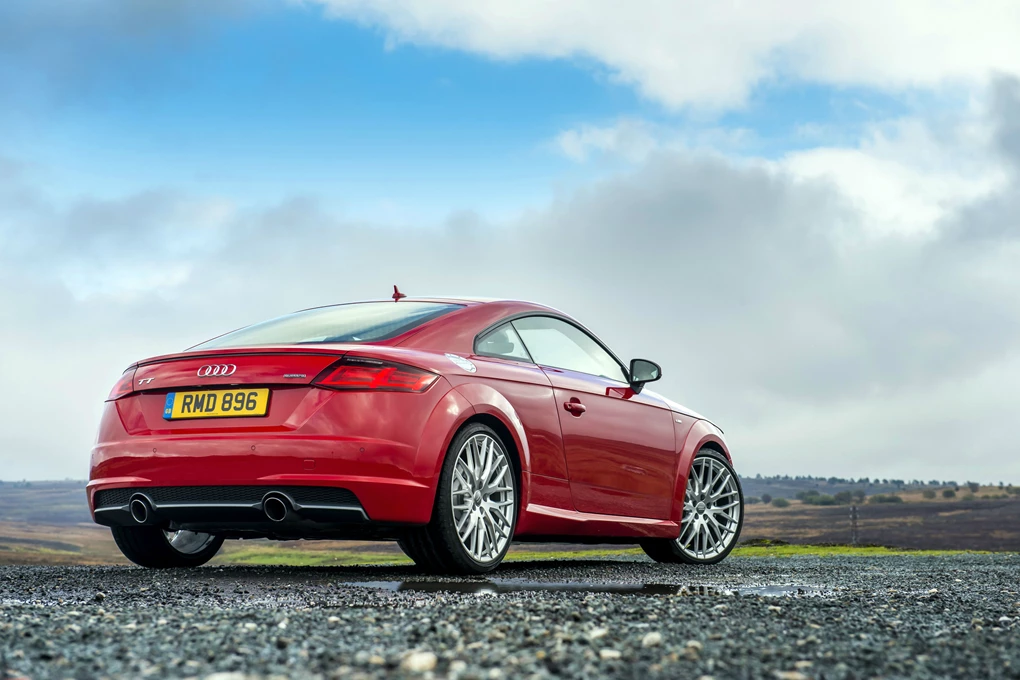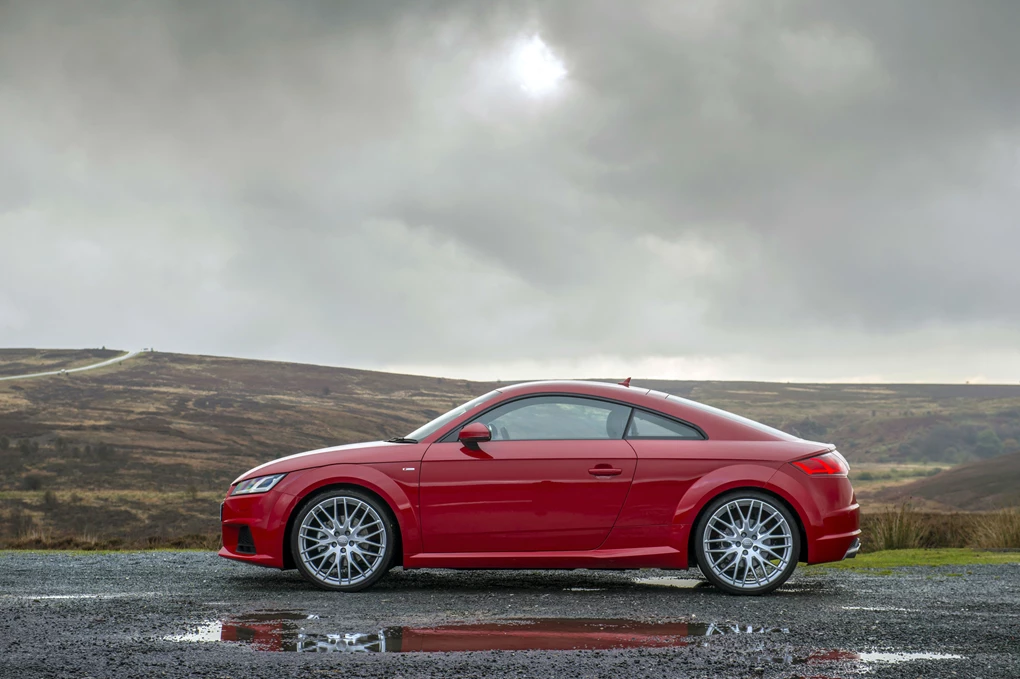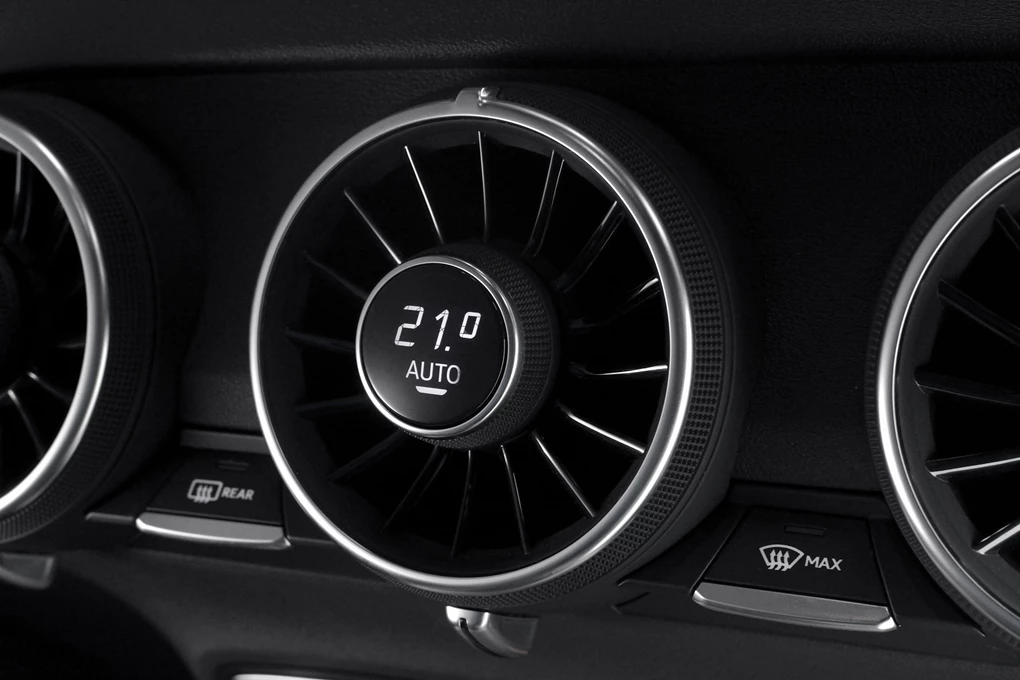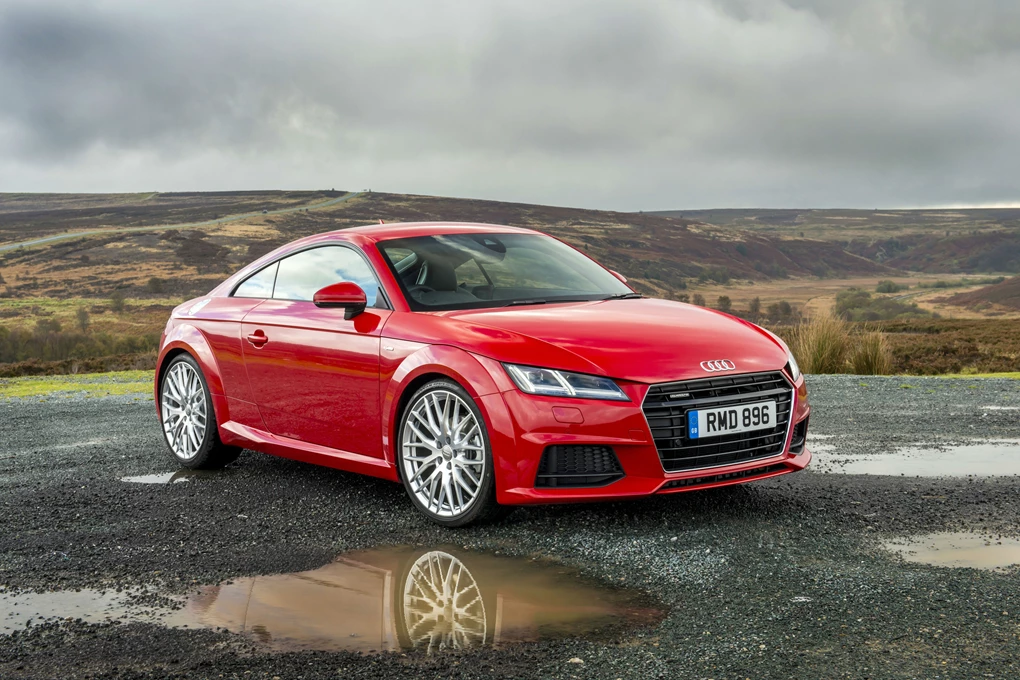Like the model it replaces, the new TT has a part-steel, part-aluminium construction, but more modern techniques make it 50kg lighter than before. There is little sign of this on the outside, where the basic shape is still recognisably related to that of the original 1990s car.
The TT is being offered at first with a choice of just two engines: a 227bhp TFSI turbo petrol and a 181bhp TDI turbo diesel known as the "ultra", which returns very favourable fuel economy and CO2 figures.
Six-speed manual transmission and front-wheel drive are available with both, though the TFSI is also offered with four-wheel drive and the S tronic semi-automatic gearbox. A hot 306bhp TTS is also on offer.
The non-TTS cars are available in two trim levels, one called Sport, the other S line. Sport models run on 18-inch wheels, S lines on 19s.

Performance
In manual, front-wheel drive form the TFSI petrol has a 0-62mph time of 6.0 seconds. The combination of S tronic and quattro four-wheel drive make a difference of more than 10 per cent, bringing the time down to 5.3 seconds.
The ultra is quite a bit slower, but 0-62mph in 7.1 seconds is hardly slow, and in the real world you're going to get from A to B in about the same time, while also using much less fuel.
The TTS, available only with four-wheel drive, gets through the same acceleration test in under five seconds, no matter what gearbox it uses.

Ride and Handling
Audi likes to speak of the TT in the same breath as the Porsche Cayman.
If you think of the TT as a car to be seen driving rather than one whose driving experience is the main point of the exercise, there's no problem. Sportier owners may however be disappointed by the underdamped front suspension. You can turn into corners reasonably quickly, but unless the road surface is perfectly smooth, the nose starts bouncing halfway through. For the same reason, the TT wallows over a series of undulations in a straight line, which can be quite an uncomfortable experience. Audi likes to speak of the TT in the same breath as the Porsche Cayman, but in this respect there is no comparison.

Interior and Equipment
The TT is named after the Tourist Trophy motorcycle races on the Isle of Man, where bikes built by NSU (a company later bought over by Audi) competed as early as 1911.
The most impressive feature here is the digital instrument display, which is one of the best on the market and includes superb satellite navigation graphics. The rest of the interior is notably simple - Audi has even placed the air-conditioning controls in the air vent surrounds to reduce clutter. There's plenty of room in the front but almost none in the rear, to the point where the TT is essentially a two-seater. Luggage capacity is 305 litres, and if you fold down the rear seats (which you might as well, since there's not much else you can do with them) this increases to 712 litres. Interior sound levels are unexpectedly high, as if Audi has taken its weight-saving process a stage too far. On the move, there's a boom through the cabin, and in heavy rain you can hear drops hitting the roof all too clearly.
Cost
Very unusually, the diesel TT is slightly cheaper than the TFSI, thanks to the lower first-year Vehicle Excise Duty rate.
Very unusually, the diesel TT is slightly cheaper than the TFSI, thanks to the lower first-year Vehicle Excise Duty rate. CO2 emissions of just 110g/km mean that payments from year two onwards will be just £20 as long as the current system remains in place. Combined fuel economy is 67.3mpg. Unless you really don't like diesel or are desperate for the extra performance, there seems little point in choosing the TFSI, which is slightly more expensive and has economy and CO2 figures of 47.9mpg and 137g/km in manual front-wheel drive form. The S tronic quattro is well behind on 44.1mpg and 149g/km, and costs £2,925 more to buy.
Our Verdict
The TT has attracted so many fans over the years that the new one can hardly fail. All the same, we'd rather Audi had done a better job with it. In some ways it's very good, and the diesel's combination of performance and economy is exceptional. But it could be quieter, and it could be better to drive. Both of these things could be sorted long before the fourth-generation car appears, and we hope they will be.





